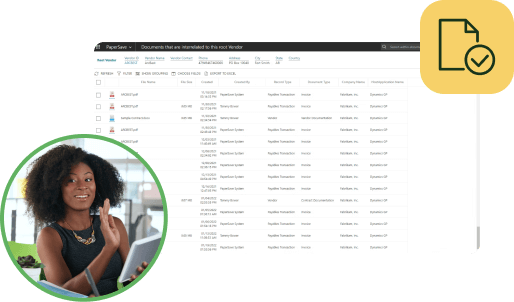
Wadih Pazos
Wadih founded both PairSoft and PaperSave. He is an avid technologist who specializes in streamlining operations and maximizing productivity.
View all posts by Wadih PazosWadih Pazos

According to Wired the annual growth rate for the amount of paper used by the average company is 25 percent. Currently there are over 4 trillion paper documents in the U.S. and that number is growing at a rate of 22 percent, or about 880 billion new documents each year.
That much paper causes many problems. It is bad for the environment certainly, each piece of paper is made from a tree and each tree felled is one less tree living and absorbing carbon dioxide and other greenhouse gasses. But more importantly for businesses, much of that paper needs to be stored, sorted, categorized and filed so that it can be found and used again if needed. Both the storage and the searching of all that paper are a resource heavy task, and workers have to devote time and effort to digging through piles of paper when it may not be necessary. In the modern world there are ways to cut down on how much paper comes into and is generated by an office. It pays to look into some of these methods as they will save time, money and the environment.
The first step is migrating internal documents like training manuals and proposals onto the cloud. Using a free service like Google Drive, a company can digitally host, share and edit all its internal documents. The drive system handles regular text documents as well as spreadsheets and slide presentations. It is collaborative and allows employees to simultaneously edit a given document and even supports chatting while editing letting colleagues in different geographical locations work side-by-side on the same thing.
Drive is an outgrowth of Gmail, a system which can also cut down on workplace paper use. It can be used for all interoffice communication with the email client handling big picture projects and the much simpler Google Chat function helping with quick queries. If Google is not useful, there are many other completely free programs on the web that allow for sharing, storing and editing documents that can help eliminate one layer of clutter.
A good step when trying to eliminate paper around the office is to find ways to limit the amount of paper that comes from external sources. If care isn’t taken to think critically about how to reduce the influx of paper an office can quickly find itself buried under mountains of paper. Make arrangements to have bank statements and utility bills delivered in paperless forms. Just about every type of company that bills externally now has a paperless option, so take advantage and cut down on the amount of useless paper that flows into the office.
For other documentation that comes into the office in paper form, try to find ways to digitize. Paper forms filled out by clients and vendors can easily be replaced by electronic forms filled out via a web portal or on a tablet in the office. You can even eliminate paper versions of forms that had traditionally needed a signature. A law passed in 2000, the Electronic Signatures and Global National Commerce Act made electronic signatures just as valid as hard copy ones in the United States.
Automated workflows empower your team to focus on larger, more complex initiatives without having to think about small processes.


Many organizations start with manual receipt handling, fragmented card feeds and slow AP processes. Implement AI agents to auto-capture receipts, route approvals, enable punch-out buys and post to the ERP.
Result: faster batching, fewer errors and cost savings. “This saves us hours every month.”
Many organizations face slow, paper-heavy AP and fragmented procurement that waste time and inflate costs. AI Agents can automate approvals, PO matching and record sync to improve speed, accuracy and control. Client quote: “It freed up hours and made our process reliable.”
Operational drag and rising costs slow growth: teams waste time on manual tasks, misaligned priorities and opaque processes. AI Agents help automate routine work and coordinate actions across teams. “We’ve lost time to repeats and handoffs,” says a typical client.
Companies struggle with manual procurement, fragmented approvals, and costly integrations that slow growth and obscure spend. Our AI Agents streamline requisitions, POs, and invoice matching to cut manual work and improve visibility. “We were wasting time and missing insights,” says a client.

Many teams start with fragmented PO/AP systems, manual matching and delayed financial reporting. Deploying AI agents to automate PO checks, real-time encumbrance tracking and invoice matching reduces processing time and errors, delivering live budgets and faster closes. “Finally, we can see current balances and approve instantly.”
Many companies juggle growing invoice volumes and legacy systems. They struggle with manual processes, compliance gaps and limited headcount. Our AI Agents automate integrations, enforce rules and surface exceptions. The typical outcome: faster closes and measurable ROI. “We stopped chasing invoices.”